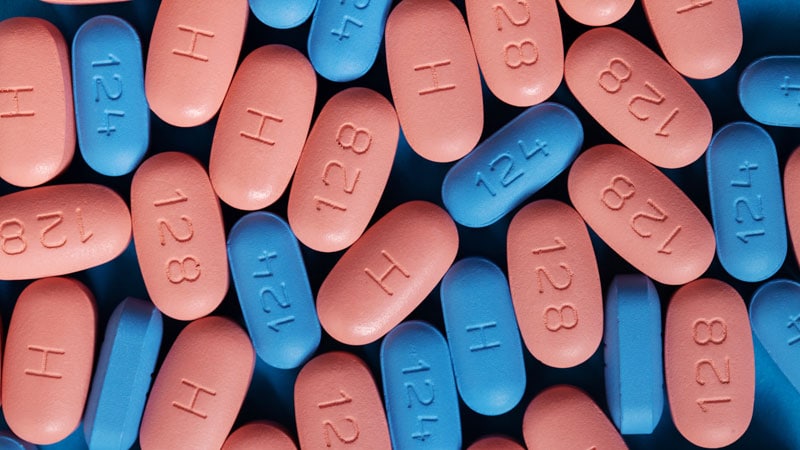Advancing SDG 3: Report on Tenofovir-Sparing Antiretroviral Therapy and Hepatitis B Virus Management
Introduction: Aligning HIV Treatment with Global Health Goals
A significant analysis from the Swiss HIV Cohort Study has provided critical data supporting the United Nations Sustainable Development Goal 3 (SDG 3), which aims to ensure healthy lives and promote well-being for all. The study investigated the safety of switching people with HIV and resolved Hepatitis B Virus (HBV) infection from tenofovir-based antiretroviral therapy (ART) to tenofovir-sparing regimens. The findings indicate that such a switch does not lead to clinically meaningful HBV reactivation, a crucial step in optimizing long-term HIV care and directly contributing to SDG Target 3.3, which calls for an end to the epidemics of AIDS and the combating of hepatitis.
Study Methodology and Parameters
The research, presented at the European AIDS Clinical Society (EACS) 2025 Annual Meeting, was designed to assess the risk of HBV reactivation in a vulnerable population, reflecting a commitment to health equity as outlined in SDG 10 (Reduced Inequalities).
- Participants: The study included 380 matched participants from the Swiss HIV Cohort Study who were positive for hepatitis B core antibody (anti-HBc) but negative for hepatitis B surface antigen (HBsAg), indicating a resolved past infection.
- Cohort Groups: Participants were matched based on age, sex at birth, and duration of prior tenofovir therapy and were divided into two groups:
- Those who transitioned to non-HBV-active ART regimens.
- Those who transitioned to lamivudine/emtricitabine-containing ART.
- Assessment: A highly sensitive two-step HBV DNA detection method was used on plasma samples at baseline and at least one year after the therapy switch. Researchers also monitored HBsAg status and HBV RNA.
- Demographics: The median participant age was 50 years, and women constituted approximately 25% of the cohort. The median duration of prior tenofovir therapy was 4.5 years.
Key Findings: Ensuring Patient Safety and Well-being
The study’s results provide reassuring evidence for clinicians and patients, reinforcing the safety of modernizing HIV treatment protocols in line with SDG 3’s focus on quality healthcare.
- HBV Reactivation: Following a minimum of one year of follow-up, detectable HBV DNA was observed in only 1.6% of participants on non-HBV-active regimens and 1.1% of those on lamivudine/emtricitabine-containing regimens.
- Clinical Significance: No participant in either group had quantifiable HBV DNA via polymerase chain reaction (PCR). All instances of detectable DNA remained below the threshold of clinical concern.
- Infection Status: All participants remained HBsAg-negative and HBV RNA-negative, confirming that no clinically relevant reactivation occurred.
Contribution to Sustainable Development Goal 3 Targets
This research directly supports the achievement of specific targets within SDG 3 by providing evidence to guide safe and effective treatment strategies.
- Target 3.3 (End Epidemics of AIDS and Combat Hepatitis): By confirming the safety of tenofovir-sparing regimens, including dual-drug and long-acting injectables, the study allows for broader implementation of advanced ART. This helps improve adherence and quality of life for people with HIV, which is essential for ending the AIDS epidemic, while simultaneously ensuring the safe management of past hepatitis B infections.
- Target 3.8 (Achieve Universal Health Coverage): The findings empower clinicians to offer treatment options that reduce pill burden, mitigate long-term toxicity, and address the stigma associated with daily oral therapy. This person-centered approach is a cornerstone of achieving universal access to quality essential healthcare services and medicines.
Expert Commentary and Broader Implications for Health Systems
Expert analysis confirms that these findings align with broader global health trends and support current clinical guidelines. This consensus is vital for achieving SDG 17 (Partnerships for the Goals) by fostering collaboration and knowledge sharing in the global health community.
- Consistency of Evidence: The results are consistent with other data indicating that switches to tenofovir-free regimens, such as long-acting cabotegravir/rilpivirine, do not cause clinically significant HBV reactivation.
- Clinical Recommendations: For anti-HBc-positive, HBsAg-negative individuals, the findings support switching to tenofovir-sparing regimens. Key considerations for health providers include:
- Hepatitis B vaccination remains essential for individuals lacking anti-HBs antibodies.
- For those switching to regimens with no HBV-active components, periodic monitoring of liver enzymes may be advisable.
- Tenofovir- or entecavir-containing therapy remains the standard of care for HBsAg-positive individuals.
Conclusion: Reinforcing Evidence-Based Policies for Global Health
The findings from the Swiss HIV Cohort Study provide robust, evidence-based support for evolving HIV treatment strategies. By demonstrating the safety of tenofovir-sparing ART in people with resolved HBV, this research enhances confidence in current clinical guidelines. This progress is a vital contribution to achieving the health-related targets of the 2030 Agenda for Sustainable Development, ensuring that medical advancements improve the long-term health and well-being of all people living with HIV.
Analysis of Sustainable Development Goals in the Article
-
Which SDGs are addressed or connected to the issues highlighted in the article?
-
SDG 3: Good Health and Well-being
The entire article is dedicated to health-related issues, specifically focusing on the management of HIV and Hepatitis B (HBV) co-infection. It discusses clinical research, treatment regimens (antiretroviral therapy – ART), and patient outcomes, all of which are central to ensuring healthy lives and promoting well-being for people living with these diseases.
-
SDG 3: Good Health and Well-being
-
What specific targets under those SDGs can be identified based on the article’s content?
-
Target 3.3: By 2030, end the epidemics of AIDS, tuberculosis, malaria and neglected tropical diseases and combat hepatitis, water-borne diseases and other communicable diseases.
The article directly addresses this target by focusing on improving treatment for people living with HIV and managing the risk of Hepatitis B reactivation. The research presented aims to find safer and more effective long-term treatment strategies (“tenofovir-sparing regimens”), which is a crucial component of combating the epidemics of both AIDS and hepatitis.
-
Target 3.b: Support the research and development of vaccines and medicines for the communicable and non-communicable diseases that primarily affect developing countries…
The article is centered around a major clinical study (the “Swiss HIV Cohort Study”) and discusses findings presented at the “European AIDS Clinical Society (EACS) 2025 Annual Meeting.” This highlights ongoing research and development in the field of infectious diseases. The discussion of new treatment options like “dual-drug and long-acting injectable ART regimens” and “long-acting cabotegravir/rilpivirine” is a direct reflection of progress in medical research aimed at creating better medicines for communicable diseases like HIV and HBV.
-
Target 3.3: By 2030, end the epidemics of AIDS, tuberculosis, malaria and neglected tropical diseases and combat hepatitis, water-borne diseases and other communicable diseases.
-
Are there any indicators mentioned or implied in the article that can be used to measure progress towards the identified targets?
- HBV Reactivation Rates: The study explicitly measures the rate of HBV reactivation in patients switching ART regimens. The article states that “1.6% of participants on non-HBV-active regimens and 1.1% of those on lamivudine/emtricitabine-containing regimens had detectable HBV DNA,” but crucially, none were “clinically meaningful.” This rate is a direct indicator of treatment safety and effectiveness in managing hepatitis.
- Virologic Markers for Disease Control: The article mentions several specific biological markers used to monitor the diseases. These include “HBV DNA,” “HBsAg status,” and “HBV RNA.” The findings that participants remained “HBsAg-negative” and “HBV RNA-negative,” with HBV DNA levels “below the limit of quantification,” serve as precise indicators of successful viral suppression and disease management.
- Development and Adoption of New Treatment Regimens: The article’s focus on switching from “tenofovir-based” therapy to “tenofovir-sparing regimens,” including “long-acting injectable ART,” indicates progress in medical innovation. The existence and study of these new therapies are indicators of ongoing research and development efforts.
- Patient Quality of Life and Treatment Adherence: The article implies indicators related to patient well-being by noting that new regimens can “reduce pill burden, address stigma related to daily oral therapy, or mitigate long- and short-term toxicity.” These factors are crucial for long-term treatment adherence and overall health outcomes, contributing to the goal of ending the AIDS epidemic.
- Hepatitis B Vaccination: The recommendation that “hepatitis B vaccination remains essential for individuals without anti-HBs antibodies” implies that vaccination coverage is a key indicator for preventing new infections and controlling the spread of hepatitis.
-
Create a table with three columns titled ‘SDGs, Targets and Indicators” to present the findings from analyzing the article. In this table, list the Sustainable Development Goals (SDGs), their corresponding targets, and the specific indicators identified in the article.
SDGs Targets Indicators SDG 3: Good Health and Well-being Target 3.3: End the epidemics of AIDS… and combat hepatitis… - Rates of clinically meaningful Hepatitis B virus (HBV) reactivation.
- Status of virologic markers (HBsAg, HBV DNA, HBV RNA) in patients.
- Patient-centered outcomes (reduction in pill burden, stigma, and toxicity).
- Hepatitis B vaccination coverage among at-risk populations.
SDG 3: Good Health and Well-being Target 3.b: Support the research and development of… medicines for the communicable… diseases… - Execution of clinical studies (e.g., Swiss HIV Cohort Study).
- Development and clinical assessment of new ART regimens (e.g., tenofovir-sparing, long-acting injectables).
Source: medscape.com







